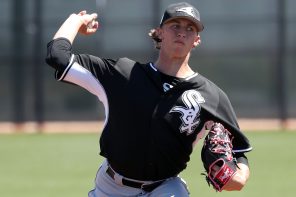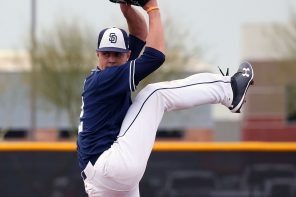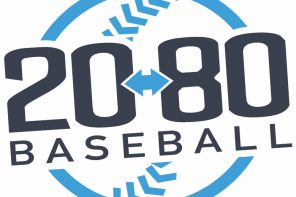Cole Wiper
 |
|
Wiper has under-impressed for the Rangers since receiving a $700,000 signing bonus as their 10th-round pick in the 2013 MLB Draft. While he has significant arm strength, he is yet to put things together on a consistent basis, and his struggles to command the fastball in the strike zone has resulted in high hit totals (8.7 hits/9 this year, down from 11.0 hits/9 in 2015). Wiper has a long, slender frame that allows him to create good angle and really drive the ball downhill resulting in excellent groundball rates (1.20 in 2014, 1.21 across two levels in 2015, and a 2.07 mark so far this year). Where he tends to run into trouble is when he misses up in the zone with the fastball – where it loses a great deal of its late life, flattens out, and becomes very hittable even at its above-average velocity (89-to-94, T96). His command in 2016 has been so erratic that it can almost be considered “hitter to hitter”, and when he falls behind in the count, he lacks the average to above-average secondary pitches to get him back into the count. This ultimately makes him extremely predictable, and when you’re walking 3.7 batters per 9, those hits you give up tend to come with runners on base – and we all know what that equals. So what’s there that still leads me to believe that this kid will eventually crack the big leagues? I think his current starting role has a lot to do with his limited success. He doesn’t possess the fastball command or the secondary stuff to run through lineups two and three times and consistently get hitters out. His changeup and curveball both can flash average, but the majority are below average, and his lack of feel with both pitches renders them unusable at times. However, he has shown that he will have shutdown innings sprinkled into his starts where he locates the fastball down with sink to generate ground ball outs, and he gets ahead in the count so his secondary stuff can be more effective. As a starter in 2015 at Spokane (Short-Season A), Wiper gave up 36 hits across 27 IP, walked 12 and struck out 19. As a reliever that same year, he gave up four hits over 10 innings, allowed no runs, walked three and struck out nine. So far in 2016 he has only thrown one inning as a reliever where he gave up a solo bomb, but struck out two and didn’t walk anybody. So why hasn’t he been converted to the bullpen full time yet? Well, his 2014 season in the rotation (82 hits over 90.1 IP, 88 Ks, 42 BB and a 1.37 WHIP) may have Texas still thinking that things will eventually click. That said, Wiper has significant time in pro ball already (3 ½ seasons). He’s proven that he has above-average velocity and can consistently get ground balls, but he’s also proven that he cannot consistently work ahead in the count or use his breaking ball in a fastball count. I did notice that in his two really good innings in the recent start that I saw (6/27) he appeared to be at max effort and not thinking about throttling up and back. He may be a guy that just loses all rhythm when trying to pace himself, and he needs to go 100% because that is where he feels comfortable. The reliever innings I cited are a very small sample size, but the sample size of starter’s innings is not small – and the results are not there. I see a kid with good arm action, good angle, an ability to reach back for plus velo, and who gets ground balls. When ahead in the count, he deals (15 hits allowed over 21 innings with 23 Ks and no walks); when down in the count it is the exact opposite (21 hits over 14 innings with 13Ks and 19 walks). Based on what I saw two starts ago, I’d like to see what he can do as a full-time bullpen piece. |



